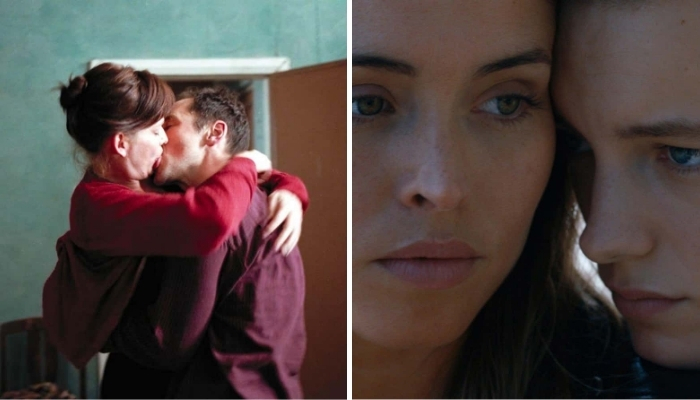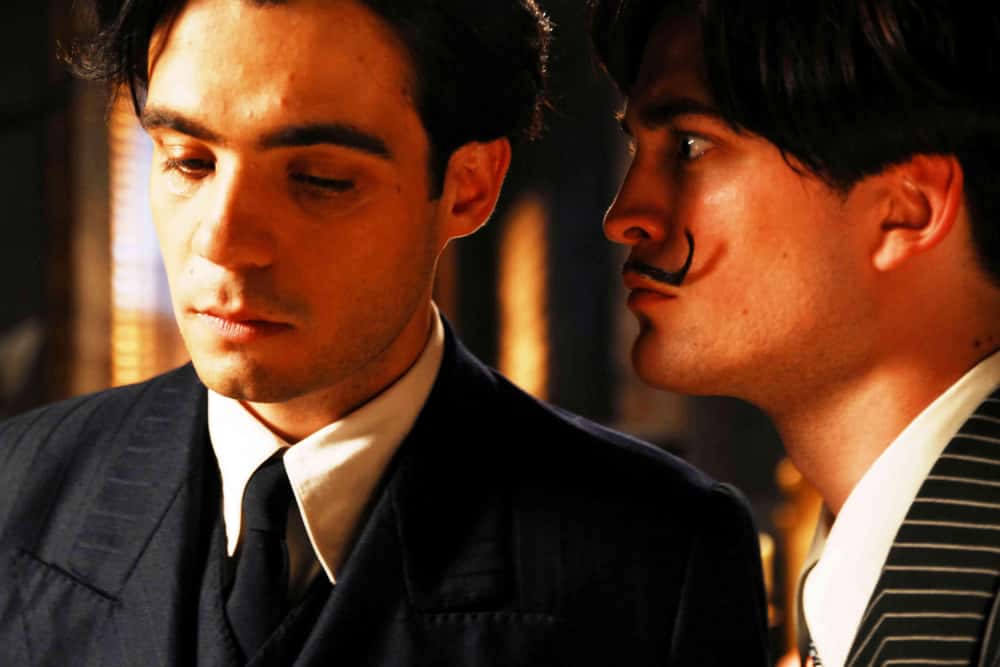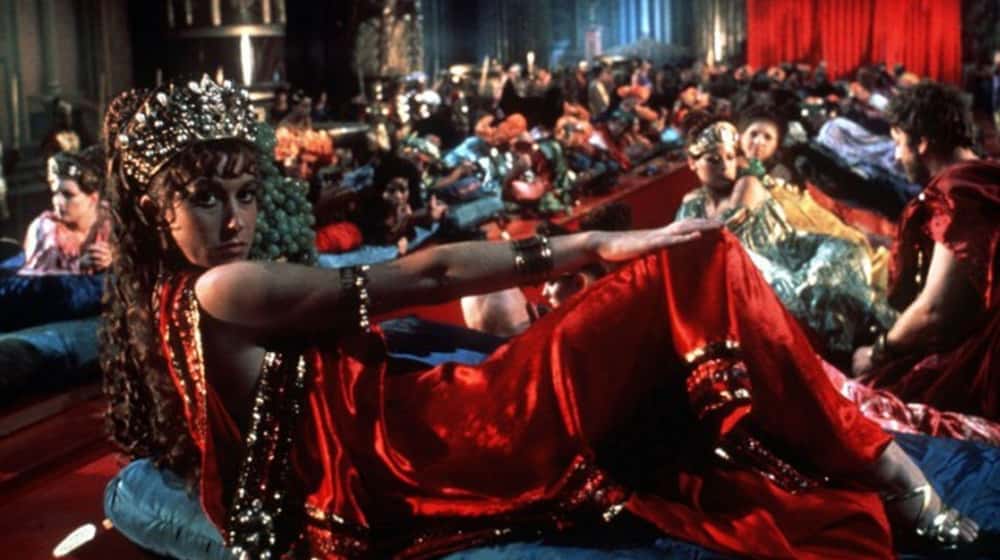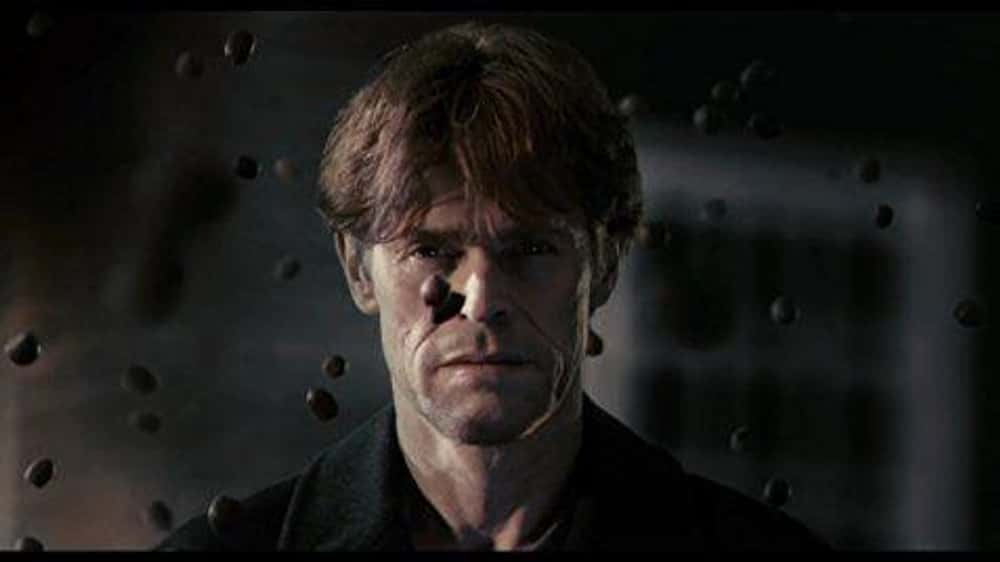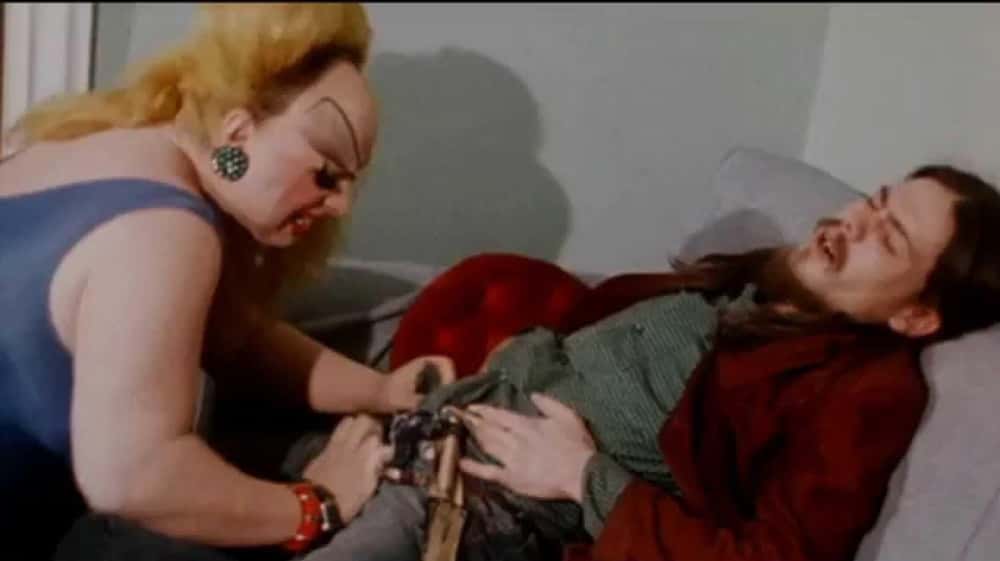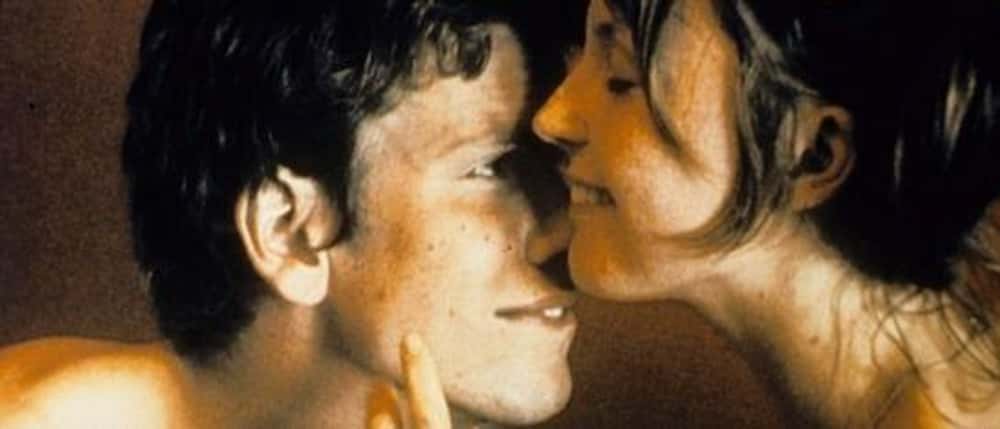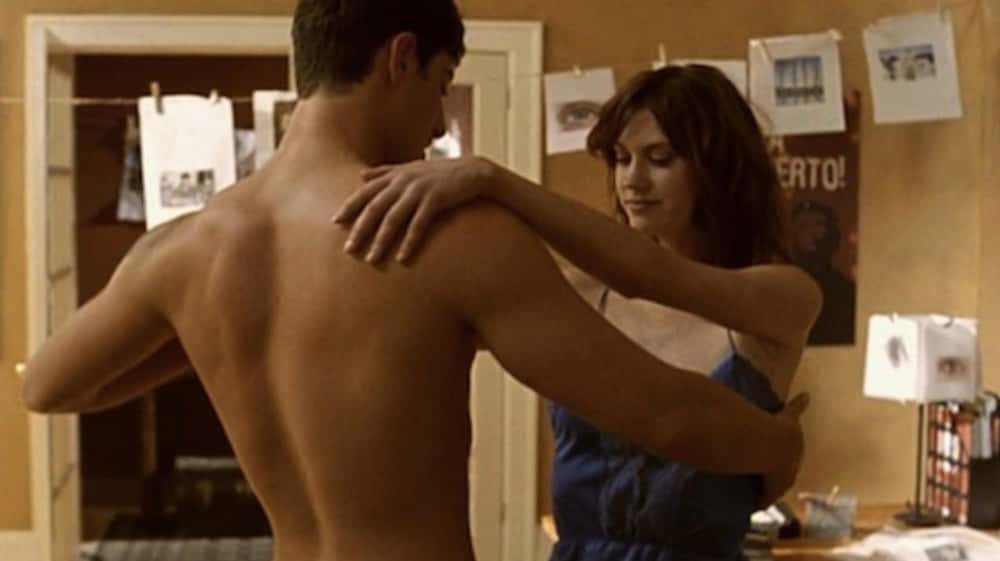15 Movies With Real, Unstimulated $€x Scenes
Working as an actor often involves stepping out of your comfort zone, and filming intimate scenes is no exception. While even experienced actors may feel nervous about performing love scenes, imagine if those scenes weren’t simulated. Some films have featured real intimate moments between actors to create a sense of genuine authenticity. Although this might seem unusual, it has been done in a few high-profile movies.
Certain directors, like Lars von Trier, have used real, unsimulated scenes in some of their films to push boundaries and enhance the storytelling. His movie Nymphomaniac is one example where real intimacy was included to achieve a certain level of realism in the portrayal of complex emotions and relationships.
For many filmmakers, these types of scenes are considered necessary to convey the depth of a story. Some directors and actors believe that breaking the line between fiction and reality can help produce a more powerful, emotionally honest narrative.
In this article, we’ll look at some of the most notable films where real intimacy was featured on screen. We’ll explore how these scenes were handled, and why they have sparked both praise and controversy. Please note, all content is presented in a respectful manner and adheres to industry guidelines.
1. Nymphomaniac: Volume I
Lars von Trier’s controversial two-part film Nymphomaniac became famous for featuring unsimulated intimate scenes, making it one of the most well-known modern films with real $€x on screen. When actor Shia LaBeouf was cast as a love interest opposite Stacy Martin, rumors quickly spread about the authenticity of their performances in the movie. Lars von Trier had openly stated that the film would include real $€xual acts, and LaBeouf initially expressed his willingness to participate.
However, when the film premiered, it was revealed that the intimate scenes between LaBeouf and Martin were not actually performed by the actors themselves. Instead, CGI was used to superimpose their bodies, creating the illusion of real $€x on screen.
The film features a star-studded cast, including Charlotte Gainsbourg, Stellan Skarsgård, Stacy Martin, Shia LaBeouf, and Christian Slater. Released in 2013, Nymphomaniac garnered significant attention for its bold approach to depicting $€xuality, sparking both controversy and discussion about the boundaries between art and explicit content.
Directed by Lars von Trier, the film pushed limits and challenged conventional norms in cinema, blending provocative themes with deeply personal storytelling.
2. Love
Gaspar Noé’s 2015 film Love made waves for its bold portrayal of intimacy, featuring real s€xual scenes between actors Karl Glusman and Aomi Muyock. What set the film apart, however, was its 3D format, making it one of the first films to showcase real $€x in a dramatic love story in such an immersive way. Love focuses heavily on physical intimacy, with the $€xual scenes being integral to the narrative rather than just part of the backdrop.
Noé went further by admitting that much of the film’s $€xual content was not choreographed, aiming to capture a raw and authentic depiction of love and desire. His goal, he revealed, was to make the film exciting for both men and women, creating a sensual and provocative experience for the audience.
The film stars Karl Glusman, Klara Kristin, and Aomi Muyock, and was released in 2015. Known for its controversial and daring approach, Love is a bold exploration of romance, intimacy, and emotion, framed within the stunning visual experience of 3D cinema.
3. Little Ashes
In Little Ashes (2008), Robert Pattinson portrayed the iconic surrealist artist Salvador Dalí, and one particular scene raised eyebrows for its intense realism. Pattinson’s portrayal of Dalí’s emotional and intimate moment was so convincing that audiences speculated it might have been more than just acting. The actor later confirmed that, in order to make the scene as authentic as possible, he had indeed touched himself onscreen. Pattinson revealed that “faking the scene just doesn’t work… so I pleasured myself in front of the camera.”
The film, directed by Paul Morrison, explored the complex relationships between Dalí, Federico García Lorca, and other historical figures, blending drama with biographical elements. Pattinson’s candid admission about his performance in the controversial scene brought additional attention to the film, sparking discussions on the boundaries between art and realism in cinema.
Starring Robert Pattinson, Arly Jover, Matthew McNulty, Simón Andreu, and Esther Nubiola, Little Ashes delves into the passionate and tumultuous aspects of Dalí’s life.
4. Caligula
Penthouse founder Bob Guccione produced Caligula, an intense historical drama about the notorious Roman emperor, marking his venture into filmmaking. Given Guccione’s background in adult entertainment, it’s not surprising that the film featured explicit unsimulated love scenes, a bold choice for a historical drama. Starring acclaimed actors like Helen Mirren and Malcolm McDowell, Caligula stands out for its audacious portrayal of Roman decadence and power struggles.
While Mirren and McDowell did not engage in explicit scenes with each other, Guccione brought in his own Penthouse Pets to film unsimulated scenes for post-production, adding a level of controversy and intrigue to the project. This blending of adult content with a historical epic shocked audiences and generated significant attention.
The film also featured notable performances from Peter O’Toole and Teresa Ann Savoy, with a screenplay directed by Giancarlo Lui and Bob Guccione himself. Released in 1979, Caligula continues to be a polarizing film, remembered for its boundary-pushing content and its ambitious attempt to blend art with explicit material.
5. The Brown Bunny
The Brown Bunny is an independent film that propelled Chloë Sevigny into the spotlight, making her a household name. Released at the Cannes Film Festival in 2003, the film stirred intense debate, particularly due to a controversial and graphic scene where Sevigny performs oral $€x on co-star and director Vincent Gallo. Although many questioned the authenticity of the scene, Sevigny herself confirmed that it was real, further igniting the media frenzy.
The movie, directed by Vincent Gallo, was polarizing, drawing both praise and criticism from audiences and critics alike. Despite the controversy, The Brown Bunny solidified Sevigny’s status not only as a talented actress but also as a fashion icon, paving the way for a successful career in Hollywood.
Alongside Sevigny and Gallo, the film also featured appearances by Cheryl Tiegs. Though the movie’s content was divisive, it left a lasting impact on both Sevigny’s career and independent cinema.
6. Antichrist
Lars von Trier’s Antichrist (2009) is a psychological horror film that pushes boundaries with its disturbing content and intense emotional depth. Starring Willem Dafoe and Charlotte Gainsbourg, the film follows a grieving couple as they struggle with the accidental death of their toddler. As they retreat to a secluded cabin, their emotional and psychological turmoil takes a dark turn, blending horror with profound themes of loss and despair.
The film is notorious for its explicit and graphic content, including unsimulated s€x scenes. While there are intense love scenes between Dafoe and Gainsbourg, one particular scene was indeed unsimulated. However, it did not feature the lead actors; instead, body doubles were used for this controversial moment. The film’s unflinching exploration of grief, $€xuality, and violence shocked many, establishing Antichrist as a landmark in avant-garde horror cinema.
Directed by Lars von Trier, Antichrist polarized audiences with its blend of arthouse aesthetics and explicit material, earning a reputation as one of the most provocative films of the 2000s. Alongside Dafoe and Gainsbourg, Storm Acheche Sahlstrøm also plays a significant role in this harrowing journey into psychological terror.
7. Sweet Sweetback’s Baadasssss Song
Sweet Sweetback’s Baadasssss Song (1971) is a groundbreaking film that revolutionized the “blaxploitation” genre, subverting its conventions and challenging Hollywood’s portrayal of African Americans. Directed by and starring Melvin Van Peebles, the film tells the story of an African-American man named Sweetback, who finds himself on the run from the police after a violent confrontation. The film is renowned for its raw, unapologetic exploration of race, power, and rebellion.
Van Peebles not only directed and wrote the film but also took on multiple roles in its production, making it a deeply personal project. The film’s provocative content included some of the most wild and explicit scenes of the era. Van Peebles famously engaged in real, unsimulated acts for these intense scenes, which added to the film’s notoriety and boldness.
Sweet Sweetback’s Baadasssss Song is considered a landmark in independent cinema and one of the first films to truly capture the struggles and defiance of African Americans in a way that had never been done before in mainstream film. Alongside Van Peebles, the film featured performances by Simon Chuckster, Hubert Scales, John Dullaghan, and West Gale.
With its revolutionary approach to both content and form, Sweet Sweetback’s Baadasssss Song became an influential and iconic piece of cinema history.
8. Pink Flamingos
Pink Flamingos (1972), directed by John Waters, is one of the most notorious and controversial films in cinema history. The film stars the legendary drag queen Divine, who became infamous for her role as “the filthiest person alive,” a title she fully embraced throughout the movie. Pink Flamingos is known for its extreme, grotesque, and shocking content, including crude scenes and explicit love scenes that push the boundaries of taste and decency.
The film’s most infamous moment involves Divine performing a highly disturbing act with a man portraying her son, which shocked audiences and cemented the film’s reputation for its shocking and transgressive approach. Its raw, avant-garde style challenged social norms, offering an unapologetic exploration of taboo subjects.
Because of its extreme content, Pink Flamingos was banned in several countries, including Australia and Canada, where its graphic scenes and controversial themes made it too much for mainstream audiences to handle.
Alongside Divine, the film features a cast including David Lochary, Mink Stole, Mary Vivian Pearce, and Danny Mills. Released in 1972, Pink Flamingos became a cult classic, celebrated for its audacity, subversion of societal expectations, and the unflinching performance of Divine. Its place in film history remains as a radical work that broke new ground in both independent cinema and the representation of drag culture.
9. The Idiots
Lars von Trier’s 1998 film The Idiots is another of his controversial works, known for pushing the boundaries of both social norms and cinematic conventions. The film follows a group of friends who decide to abandon their inhibitions and embrace their “idiot” qualities, engaging in absurd and often provocative behavior. The Idiots is infamous for its raw portrayal of human $€xuality, including scenes of unsimulated $€x, which sparked significant debate.
While most of the film’s explicit content, particularly the group activities, involved simulated acts, there is one particular scene that includes real $€xual action. Though the faces of the participants are not visible, the camera focuses on other intimate areas in an unfiltered and explicit way during one of the group scenes. This raw moment became one of the key talking points of the film, contributing to its notoriety.
While The Idiots was allowed a theatrical release, future home editions of the film saw the controversial scene pixelated, likely due to the graphic nature of the content. The film’s explicitness was part of von Trier’s attempt to challenge traditional filmmaking, and it continues to be remembered as a provocative exploration of societal taboos.
The film features performances by Jens Albinus, Anne Louise Hassing, Bodil Jørgensen, Nikolaj Lie Kaas, and Troels Lyby. The Idiots is a hallmark of von Trier’s ability to shock and stimulate thought, and it remains one of his most daring works.
10. 9 Songs
Michael Winterbottom’s 9 Songs (2004) is an explicit, boundary-pushing drama that gained significant attention for its portrayal of real intercourse between actors Kieran O’Brien and Margo Stilley. The film, which intertwines a love story with nine live performances from rock bands like The Dandy Warhols, Elbow, and Franz Ferdinand, is most remembered not for its musical performances but for its graphic and unsimulated $€x scenes.
These explicit moments, filmed from various angles, were central to the movie’s shock value and controversial reception. While 9 Songs was praised by some for its raw, intimate portrayal of a relationship, it was criticized by others for its bold decision to include real $€xual activity between the lead actors.
Despite its critical divide, the film remains notable for its unflinching exploration of intimacy, $€xuality, and the complexities of modern relationships. In addition to the provocative $€x scenes, the film’s soundtrack, featuring live performances, adds a unique layer to the narrative.
Alongside O’Brien and Stilley, 9 Songs features live performances by prominent bands, contributing to the film’s distinct blend of music and drama. While its content remains controversial, 9 Songs is remembered as one of the most daring and talked-about films of the early 2000s.
11. Lie With Me
Clement Virgo’s Lie with Me (2005) made waves for its raw and intimate portrayal of a passionate love affair, starring Eric Balfour and Lauren Lee Smith. The film centers around the $€xual and emotional dynamics between two characters, and its explicit love scenes raised eyebrows for their shocking realism. Audiences began to question the authenticity of these scenes, and it wasn’t long before both Smith and Balfour admitted that their performances were unsimulated, adding an extra layer of intrigue and controversy to the film.
The decision to include real, unsimulated intimacy in Lie with Me was particularly shocking because both lead actors, Balfour and Smith, were fairly well-known at the time. This added an unexpected level of honesty and vulnerability to their portrayals, which surprised critics and pushed the boundaries of what audiences had come to expect from mainstream cinema.
The film also features performances by Don Francks, Polly Shannon, and Ron White, but it is the fearless depiction of $€xual relationships that remains its most talked-about aspect. Lie with Me was a bold move in exploring both the physical and emotional facets of intimacy, and it remains a memorable example of how cinema can confront societal taboos in a powerful and personal way.
Continue Reading by Clicking Next Button

